Home |
Contents |
Photos |
News |
Reviews |
Store |
Forum |
ICI |
Educators |
Fans |
Contests |
Help |
FAQ |
Info


The Trouble with Stereotyping...and What to Do About It
(5/17/00)
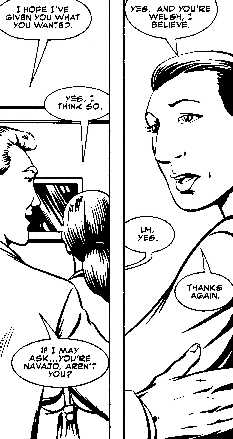
After his illness became public, against his wishes, he was asked how he was able to handle such a difficult and stigmatizing illness. His answer was simple and poignant. He said that living each day as a black man in America was more difficult than suffering with AIDS.
There has never been such an illuminating comment. To whites who don't experience or understand racism, hearing from a man who was living a life of grace and importance, who never used racism as an excuse for anything, that single statement taught a lesson.
Columnist Diane Pucin on Arthur Ashe, the black tennis star who died of AIDS, in the LA Times, 2/16/01
To engage in a serious discussion of race in America, we must begin not with the problems of black people but with the flaws of American society—flaws rooted in historic inequalities and longstanding cultural stereotypes.
Cornell West, Race Matters
I believe racism ends when we confront the racist....
Frank King, Indian Country Today, 2/21/01
*****
Jody Armour's thoughts
Jody David Armour is an attorney, professor of law at USC, and author of Negrophobia and Reasonable Racism. In an interview in the LA Times, 2/27/00, he spoke of the stereotyping blacks face every day. As he notes, his comments apply to most racial stereotyping.
Indeed, a common stereotype applies to many minorities: blacks, Latinos, Native Americans. Namely, that they're less intelligent and industrious, more uncivilized and immoral, than the rest of us. Armour explains how this stereotyping works:
Since the cradle we've been immersed in a cultural belief system that tells us that blacks, and other socially marginalized groups, are inferior, are morally bad, are not as smart, or a lot of other very negative things. And we have to realize that being weaned on those associations, establishes in all our memories stereotypes.
There are these experiments in which subjects have to evaluate interaction between two confederates....There is a debate...then there is an ambiguous bump [one bumps into the other].
And when the person who initiates the bump is white, most of the subjects interpret it as innocuous, as horseplay. But when the exact same bump is initiated by a black protagonist over 70% interpret the same bump as hostile or aggressive.
These subjects are not necessarily bigoted or racist. What is happening is black and aggression and hostility are already forged in their memory.
They've done it with black kids and white kids and found that they make the same biased judgments. Stereotypes are something that all of us have ingrained in our memories as a result of living in the cultural belief system that we do.
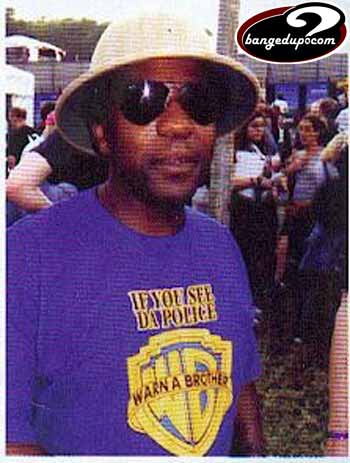
Look at stereotypes as habits. Whenever you're around certain cues that trigger the habit, you don't think about it, it just happens. The way to control any habit is to consciously attend to it when you are in danger of falling into it. You've got to think about it. You've got to consciously monitor your reactions or responses when you are around cues that trigger the habit. It may seem counterintuitive at first. I think a lot of us think that the way to get over racism is to be "colorblind."
[But] this is just the opposite of what you should do. That's the surest way to fall into the habitual responses unconsciously. Rather than being colorblind we need to be color-conscious. To resist falling into the habit, you have to be aware that you are in the presence of a cue that may trigger the habit.
Q: Why do we often assume that we are further along than we are when it comes to race relations?
Massive and deep denial. I don't think we want to acknowledge that racism is still as ubiquitous as it is. It would make a lot of us start to feel more uncomfortable about the benefits that we enjoy....
It is more comfortable to think that racism is a relic of a bygone era and that the playing field is perfectly level and you just have this occasional quack who spouts something...and it isn't reflective of anything broader or systemic.
The reality is that it is just the tip of the iceberg. And that we need to forthrightly confront that grim reality....We need a systemic cure.
Exactly, friend. We need to read and absorb your words, your book, and PEACE PARTY, too. <g>
Stereotypes are "the most significant battles"
Beyond confronting prejudicial thinking in oneself and others, we need to confront it on the societal level. That means challenging racist assertions and stereotypes whenever they appear. Rennard Strickland explains why this is critical to Indians:
Posted October 25, 2004
Native American Spirit Survives Through Centuries of Struggle, Strickland Says
The Native American struggle for survival since Europeans arrived in North America has not been one of isolated conflicts but rather an intellectual, legal, and cultural battle, said University of Oregon law professor Rennard Strickland '65, who spoke at an event sponsored by the Center for the Study of Race and Law and the Student Legal Forum Oct. 21.
Native American mythology tells of how Indians at the beginning of time were allowed to choose between a book and a bow as their weapon of choice, said Strickland, who is of Osage and Cherokee heritage. After much consideration, the Indian chose the bow because it protected him from enemies and provided food from the hunt. The white man, according to legend, was left with the book. The power of the book only became apparent when whites arrived in North America, after which the Indian soon added the book to his resources.
"Thus the book became a primary weapon in the Native struggle for survival," he said. "Change symbolized by the shift from book to bow and bow to book is central to the life of contemporary Native America. The last 500 years almost certainly produced more change than the last 25,000 years."
The Indians' struggle for survival is too often thought of as a series of guerilla battles, he said. "We dismiss nonmilitary conflict. We ignore the battles of the book." Such intellectual battles are fought in the news, on movie sets, in courtrooms, through the arts, in Congress, and at the water cooler of the Bureau of Indian Affairs. "The spirited goals of native warriors…remain much the same," he said. There is "only one struggle for survival, whether fought with book or bow."



During the past 500 years the Native American population collapsed from an estimated 25 to 50 million at its height to only 250,000 in 1890—a 95 percent drop over 400 years, Strickland said. The city at the site of the Cahokia mounds in Illinois during the 15th and 16th centuries was larger than London, Paris or Rome. The Native American population has only now returned to 2 million, according to the 2000 census. The past few centuries also saw the loss of 100 million acres of Indian lands, while the whale, fish, and deer populations also suffered. This loss was acknowledged by President Lyndon Johnson, who said, "The first Americans have become the last Americans."
"In order to fully understand the [500-year] war, the campaigns and the weapons must be viewed from the perspective of the combatants themselves," Strickland said. It's a battlefield of changing struggles that include "paintbrush warriors" (artists), "medical warriors" (physicians), "briefcase warriors" (lawyers), and more. Strickland explained that each of these areas would be outlined in his in-progress book, Spirit Red.
.
.
.
Despite the significant role of law in the Indians' struggle, Strickland said the most significant battles happen outside the courtroom. "Many of these Indian battles are about stereotypes—false conceptions or false misconceptions." Such stereotypes have a long history. He noted that one account from early European explorers tells of Indians eating "smoked unicorn," while another claimed jewels grew from female Indians' navels.
As a result of continuing misconceptions, "Indian children are struggling for their identity." The first Native American Grammy winner, Navajo flautist Raymond Nakai, faced rejection after he, band teachers from his school, and tribe members wrote Julliard on his behalf. Julliard officials wrote that although his GPA and test scores were good, he would find it difficult to survive in music school because Native Americans do not have a significant music culture. "I need to show people that my culture is important," Nakai said in response. On the flip side, in 1959 Native American artist Oscar Howe's submission to an Indian art show was rejected because it was deemed "non-Indian." Howe retorted, "Indian art can compete with any art in the world, but not as suppressed art."
"The arts are vital weapons on this shifting battlefield," Strickland said. "Art and literature, music and dance, theater and film attack the false image through beauty and majesty, satire and pathos, in real and imagined situations." He added that he has spent his life responding, or not responding, to comments that he doesn't look like an Indian. He savored the retort of Smithsonian Native American folklorist Rayna Green: "And you don't look rude, either."
Media is the messenger
We're long past the point where the primary transmission of information happens through word of mouth. These days we're inundated with tens of thousands of messages daily from advertising, TV shows, talk radio, the Internet, and myriad other sources. To change society, we must challenge these sources when they get things wrong.
An essay in Indian Country Today makes some good points on the subject. These points apply not only to Indians but to any group threatened by inaccurate media portrayals. The following are some excerpts:
The Indian sovereignty fight is a good fight
Posted: June 04, 2004 -- 9:30am EST
If Indian nations don't watch it, the media around them will often start to paint them as corrupt, as inept, as wanton and in other ways unworthy peoples. This is to be combated at every turn, we believe.
.
.
.

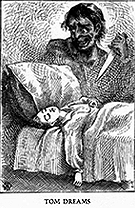
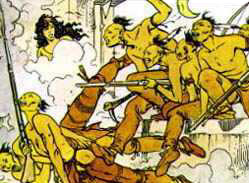 If you let the media paint over you with wide brush, once, twice, three times, you will be to the world whatever color they paint you.
If you let the media paint over you with wide brush, once, twice, three times, you will be to the world whatever color they paint you.
.
.
.
Anti-Indian traditions in America are never found too far under the social surface and there are always enough Americans who in times of political and economic tension will attack any group of color, particularly Indians, which dares to carve out their own status in society.
.
.
.
[I]f you let the outside media define your problems, soon, you will find that you and your tribe will be defined as the problem.
Perhaps the most important arena for all tribes is in media itself, as it informs and too often leads the court of public opinion. All entities seeking to hold their own in the world must contend with it; must know how to project their own unfolding stories and must not allow others to define them in the public discourse. Public perception influences and fashions public policy. The court of public opinion in some ways is as crucial as the courts of law, particularly in North America. Prior to going to the legal court, the court of public opinion sets up the conditions for the actual passing or not passing of certain laws.
This is a fine summation of why it's important to combat racism and stereotyping in our culture. "Public perception influences and fashions public policy." At Blue Corn Comics, we're dedicated to shaping public perceptions through our work, whether it be news, reviews, fiction, essays, or contests.
Why a colorblind society is impossible
Many people would rather do nothing. Perhaps because doing something would require work, they minimize the problem of racism or pretend it doesn't exist. When incidents occur, as they often do, these people have no answer other than personal virtue. If everyone were as "colorblind" as they are, they assert, the problem would disappear.
Furthermore, they claim that being aware of racism is the same as fomenting it. By setting goals and collecting statistics, they allege, the government perpetuates racial attitudes that would otherwise fade. In short, they think acknowledging racism is the problem and denying it is the solution.
That's nonsense, to put it mildly. An essay on California's Racial Privacy Initiative, which voters turned down in 2003, explains why:
Colorblind or Just Blind?
By Jack Glaser, AlterNet
October 3, 2003
One of my toddler son's favorite daycare providers is Betty. Betty is Chinese, but we've never discussed that, her appearance, or anything else about her. Nevertheless, when a little Asian boy he'd never seen before toddled up recently, my little guy patted the boy's hand and said, "Betty!"
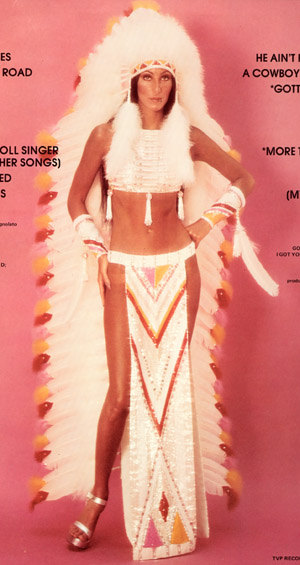
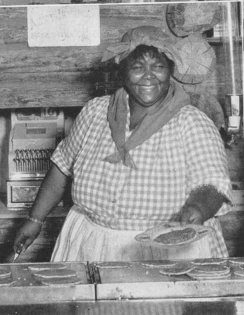
Now, I think my son is brilliant and remarkable in many ways, but I have to acknowledge that in this case he's just confirming what psychological researchers have known for decades -- that people spontaneously categorize each other on a number of dimensions, including race, starting at a pretty early age. No training is required. We just do it. In fact, my son didn't even have a word for it. He just created a racial category and called it "Betty." He, like everybody else, is a categorizing machine. For better or worse, we're hardwired to do it, so we can tell the difference between things without too much effort.
Supporters of Proposition 54, the Racial Privacy Initiative, don't seem to understand this. They want us to vote on October 7 to pass this constitutional amendment barring state institutions from collecting information about people's race, ethnicity, color, or national origin, or even categorizing them on that basis. Their rationale is that by compelling the government to stop making these categorizations we will take a big step toward making ours a "colorblind" society. They provide no evidence to support this; no examples from around the world, no projections of reductions in discrimination or intergroup conflict. It's just a hunch. The initiative's Director of Policy and Planning, Justin Jones, recently said, "We put forward Proposition 54 as a challenge to Californians to think differently." One would hope for a stronger rationale for a constitutional amendment.
Ward Connerly, the chief sponsor of Prop. 54, recently wrote that he "urge(s) the people of California to view it as a call to begin wrestling with the growing imprecision of race as a method of categorization." This is based on the theory that "race" is an artificial and "social construct." This is a valid theory on which honest people can disagree. But honest people cannot dispute that, whatever their origins, perceptions of race lead to discrimination, and perceiving race categories is the norm. Passage of Prop 54 would hamstring the efforts of government agencies, researchers, and civil rights activists and attorneys to document and combat discrimination.
Perhaps Mr. Connerly is not concerned by this because he believes that the main perpetrators of discrimination are institutions, and institutions can be colorblinded. This seems consistent with his single-minded crusade against affirmative action.
If this indeed is his belief, he has it backward. In today's society we no longer allow quotas limiting entry to our public, or publicly funded, institutions. Discrimination by institutions is not due to formal policies that might, indeed, be inhibited by a racial information ban. Rather, it is due to the judgments that individual actors within institutions make -- the personnel officer relying on her race stereotypes about ability and conscientiousness; the mortgage lending agent making an assessment of the likelihood of repayment by a minority family; the highway patrolman making a traffic stop; the doctor deciding on a course of treatment or referral; the juror making an assessment of guilt.
These actors don't rely on systematically collected data from checked boxes on forms. They infer the categories based on someone's appearance (skin color) or name (Jamal Washington vs. Peter Schmidt). Maybe if your name is Ward Connerly, you can't fully appreciate this.
Still, it might be a good idea to send the message that racial categorization is wrong by preventing the government from doing it, except for three problems. First, as noted above, we can't help ourselves. Second, many people actually want their race, ethnicity, color, or national origin to be duly noted. Third, preventing the government from collecting this data would undermine efforts to combat discrimination. Even Tom Wood, Connerly's co-sponsor of Prop 209 (the ban on affirmative action), agrees with this. He opposes 54 because it would undermine enforcement of 209.
Although advocates of forced colorblindness offer no evidence in favor of their policy, there is empirical research demonstrating that it is an ineffective approach. Studies have shown that when you encourage people to adopt a multicultural (thinking explicitly about categories) mindset, they are significantly less likely to exhibit prejudice than when you encourage them to be colorblind or to suppress their stereotypes. We see categories, we can't help it, and it is better to recognize that and make the best of it.
From a policy analytic perspective, the Racial Privacy Initiative is an abomination. The idea that you can set and change policies that are beneficial to society with less information utterly defies logic. Obviously, government knowledge of our personal matters should be kept to a minimum, and the Prop 54 proponents knew this would resonate with voters when they dubbed it the Racial Privacy Initiative. But virtually all survey questions about race are optional. We're not talking about the FBI snooping around your recycling bin here. There is no racial privacy problem in California. And government knowledge of these categories does much more good than harm.


Sometimes, in a cynical exploitation of Martin Luther King's civil rights legacy, advocates of forced colorblindness quote his statement about how he had a dream that future generations, "will not be judged by the color of their skin but by the content of their character." What they fail to add is that Dr. King also said, "Darkness cannot drive out darkness; only light can do that."
Jack Glaser is an assistant professor at the Goldman School of Public Policy at UC Berkeley and has a Ph.D. in Social Psychology.
Related links
Jody Armour's thoughts on Chief Wahoo
Are ethnic groups "balkanizing" the US?
Highlights of the US report to the UN on racism
* More opinions *
|
|
. . .
|

|
Home |
Contents |
Photos |
News |
Reviews |
Store |
Forum |
ICI |
Educators |
Fans |
Contests |
Help |
FAQ |
Info
All material © copyright its original owners, except where noted.
Original text and pictures © copyright 2007 by Robert Schmidt.
Copyrighted material is posted under the Fair Use provision of the Copyright Act,
which allows copying for nonprofit educational uses including criticism and commentary.
Comments sent to the publisher become the property of Blue Corn Comics
and may be used in other postings without permission.







 If you let the media paint over you with wide brush, once, twice, three times, you will be to the world whatever color they paint you.
If you let the media paint over you with wide brush, once, twice, three times, you will be to the world whatever color they paint you.



